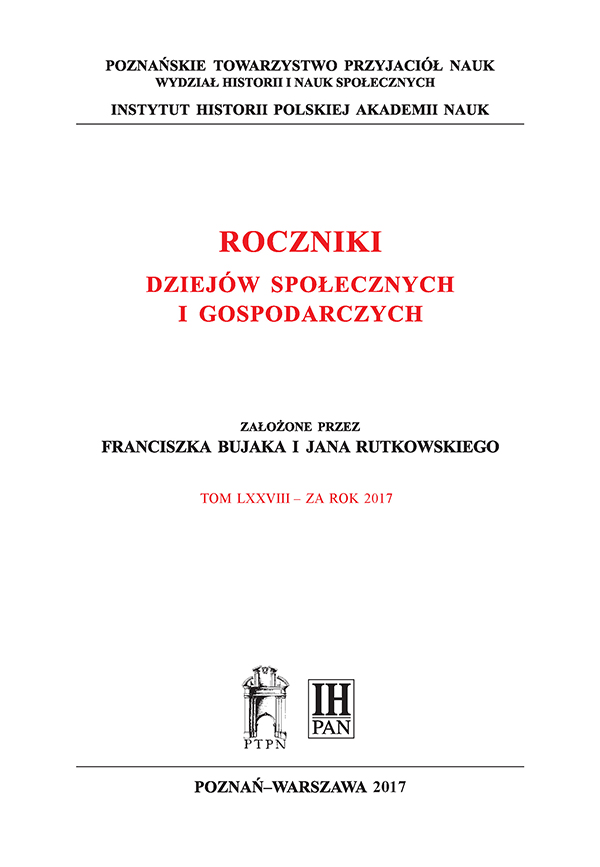Drobna szlachta w Królestwie Polskim w drugiej połowie XVI wieku i jej znaczenie społeczno-gospodarcze
Petty nobility in the Polish Kingdom in the second half of the sixteenth century and its socio-economic importance
Author(s): Krzysztof BorodaSubject(s): Economic history, Social history, 16th Century
Published by: Instytut Historii im. Tadeusza Manteuffla Polskiej Akademii Nauk
Keywords: history of sixteenth-century Poland;sixteenth-century Polish nobility;social history; economic history
Summary/Abstract: The purpose of the present article is to assess – throughout a statistical analysis of the information from tax registers of fi ve provinces (voivodeships) – the importance of petty nobility within the social and economic structures of the noble estate in the Polish Kingdom at the end of the sixteenth century. In order to divide the noble estate into separate categories of wealth a criterion of estimated potential of the folwark (a form of manor farm) is used. Thus, the author regards as the petty nobility all noble landowners who personally cultivated their land regardless its area, and the peasant owners of maximum 5 lans (Polish: łan; Latin: laneus) (i.e. farms equalling folwark area up to ca. 4 lans). The land taxed by noblemen who had no serfs is regarded as no-peasant folwark (cultivated personally by the family of nobleman or with hired men and smallholders called zagrodnicy). For noblemen with serfs an assessment of their hypothetical folwark area has been made on the basis of taxed peasant land. The petty nobility thus defi ned predominated within the noble estate of the analysed provinces at the end of the sixteenth century, occasionally quite overwhelmingly. Its percentage in the total number of noble estates in the provinces was as follows: in the voivodeship of Cracow – 67 per cent, of Poznań – 68 per cent, of Kalisz – 80 per cent, of Łęczyca – 92 per cent, and of Płock – 97 per cent. A strong economic domination of petty nobility was in the province of Płock, where those noblemen had 80 per cent of potential with a very high (20 per cent) percentage of noble estates comparable to those of peasant farms and based on personal cultivation of land. In the province of Łęczyca, among the petty nobility with almost 60 per cent of the total folwark land area most important was a group of noble farms of one to two lans. In the remaining three provinces (of Cracow, Poznań and Kalisz) folwarks belonging to petty noblemen were of secondary importance, as they had only 30–40 per cent of the total folwark area. However, their hypothetical acreage under cultivation was larger, as it usually equalled ca. 2.5 to 4 lans.
Journal: Roczniki Dziejów Społecznych i Gospodarczych
- Issue Year: 2017
- Issue No: 78
- Page Range: 39-65
- Page Count: 27
- Language: Polish

